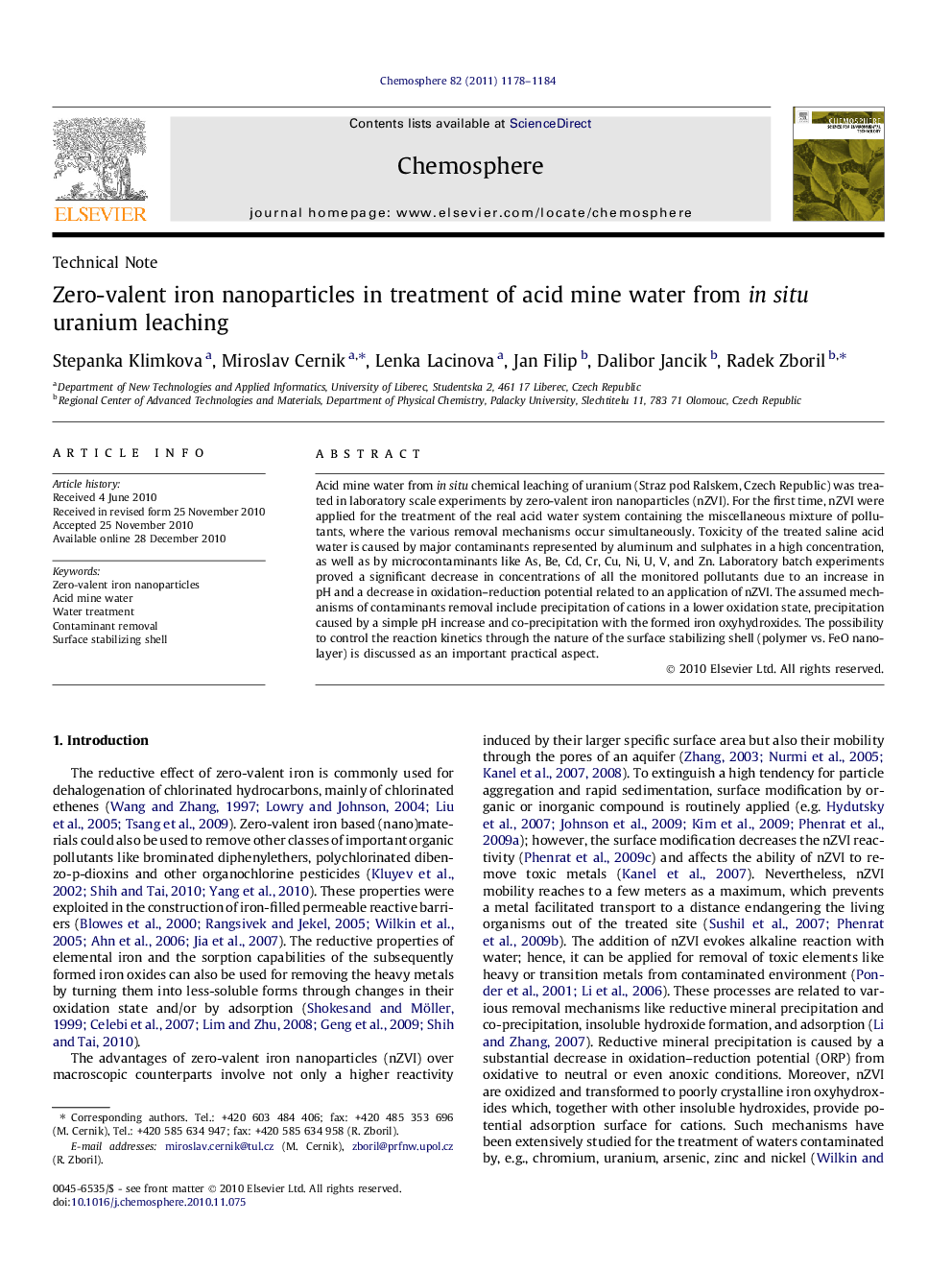| کد مقاله | کد نشریه | سال انتشار | مقاله انگلیسی | نسخه تمام متن |
|---|---|---|---|---|
| 4411408 | 1307592 | 2011 | 7 صفحه PDF | دانلود رایگان |

Acid mine water from in situ chemical leaching of uranium (Straz pod Ralskem, Czech Republic) was treated in laboratory scale experiments by zero-valent iron nanoparticles (nZVI). For the first time, nZVI were applied for the treatment of the real acid water system containing the miscellaneous mixture of pollutants, where the various removal mechanisms occur simultaneously. Toxicity of the treated saline acid water is caused by major contaminants represented by aluminum and sulphates in a high concentration, as well as by microcontaminants like As, Be, Cd, Cr, Cu, Ni, U, V, and Zn. Laboratory batch experiments proved a significant decrease in concentrations of all the monitored pollutants due to an increase in pH and a decrease in oxidation–reduction potential related to an application of nZVI. The assumed mechanisms of contaminants removal include precipitation of cations in a lower oxidation state, precipitation caused by a simple pH increase and co-precipitation with the formed iron oxyhydroxides. The possibility to control the reaction kinetics through the nature of the surface stabilizing shell (polymer vs. FeO nanolayer) is discussed as an important practical aspect.
Journal: Chemosphere - Volume 82, Issue 8, February 2011, Pages 1178–1184